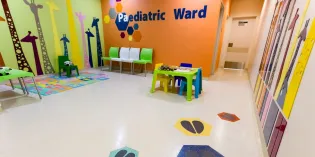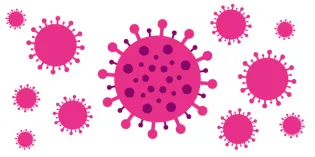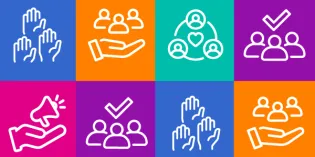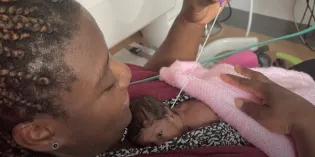1. Background
The RCPCH has carried out a census of paediatricians and child health services every two years since 1999. This report is primarily based on data from the RCPCH Workforce Census 2015, with additional data from the Office of National Statistics, and RCPCH trainee recruitment processes.
Clinical directors and leads of all 195 UK NHS Trusts and Health Boards with child health services were surveyed in October 2015. Sixty-seven percent (131/195) provided a complete response, 21% (40/195) a partial response, and 12% (23/195) no response. Where information was incomplete, alternate sources were used to supplement census data.
2. Principal findings
2.1. The UK paediatric workforce
2.1.1. Workforce numbers
- Between 2013 and 2015, the UK paediatric consultant workforce grew from 3718 to 3996, a rise of 7.5%, and speciality and associate specialist numbers fell from 923 to 808, a decline of 12.5%
- There are currently an estimated 241 whole time equivalent (WTE) career grade vacancies (133.4 WTE consultant, 57.5 WTE Speciality and Associate Specialist, and 50.5 WTE other non-training grades)
- At least 752 WTE extra consultants are required to meet the RCPCH Facing the Future1 , and specialist services2 3 4 5
- An increase in the number of trainees entering paediatrics to 465 in each training year is required to meet RCPCH Facing the Future standards for consultant numbers (this is a 15% increase from 2016)
- Advanced nurse practitioners are employed by 60% of children’s hospital services (an estimated 426 WTE)
- There are less than 10 physician associates (employed in less than 3% of children’s services)
- Academics now represent 4.2% (168 of 3996) of the consultant-level workforce compared with 8.7% (191 of 2186) in 2001
2.1.2. Demographics
- Women represent 52% of the consultant and 74% of the trainee paediatric workforce
- Primary medical qualifications were obtained outside the UK by 40% of career grade paediatricians (6% European Economic Area; 34% rest of the world)
- The number of paediatric consultants who are European Economic Area graduates increased from 140 in 2009 to 238 in 2015 (a rise from 4.4% to 6%).
2.1.3. Working practices
- Currently 22% of consultants (33% of women; 9% of men) work less than full time
- The average number of programmed activities delivered by existing consultants has risen from 9.9 in 2013 to 10.1 in 2015; this represents an additional work load equivalent to 80 WTE
2.1.4. Trainee fill rates
- Applicants for ST1 training in paediatrics fell from 800 in 2015 to 743 in 2016 and 580 in 2017 with a similar number of places available in each year (an overall fall of 27.5%)
- The paediatric training fill rate at ST1 and ST2 levels in 2016 was 92% in England and 100% in Scotland, Wales and Northern Ireland
- In 2017 recruitment into ST1 posts following the first interview round resulted in an overall fill rate of 83%; this poor fill rate necessitated the RCPCH re-advertising ST1 posts and running a second round of interviews for the first time ever. There was a marked regional variation in initial fill rates, with the worst affected regions being Yorkshire & Humber (49%), East Midlands (56%), East of England (56%) and West Midlands (60%).
- The number of applicants who are European Economic Area graduates declined from 97 in 2015, 43 in 2016 to 41 in 2017 (a 58% fall in 2 years)
- The number of doctors in training in paediatrics who are European Economic Area graduates increased from 153 in 2012 to 200 in 2015 (a rise from 4.2% to 5.5%)6
- In 2016, 7% of ST1-3, and 13% of ST4-5 and ST6-8 trainees were out of programme or on parental leave
- General paediatric and neonatal rotas are currently experiencing an average vacancy rate of 14%
2.1.5. Workforce pressures
- There has been a 27.2% fall from 2013 to 2016 in the number of F1 doctors planning to apply to paediatric specialty training7
- Recruitment difficulties represent 45% of all workforce and service pressures cited by census respondents
- Other commonly cited pressures relate to workload, inadequate funding, and policy and political issues
- In the year to September 2015, shortages of nurses and/or doctors led to periods of closure to new admissions by 31% of paediatric inpatient units and 41% of neonatal units
2.2. UK paediatric services
2.2.1. Attendances and admissions
- The number of hospital admissions for children in England rose by 25% between 2013/14 and 2015/16, from 1.2million to 1.5million8 9 ; the number of completed consultant episodes for children in England rose by 23% over the same period
- Attendances by children aged 0-17 at Accident and Emergency Departments in England grew by 7%, from 4.5 million to 4.8 million, between 2014/15 and 2015/16
2.2.2. Number of paediatric units
- Between 2013 and 2015, in the UK, the number of inpatient units fell by 2, neonatal units by 6, outpatient services by 3 and emergency departments by 5
- Since 2013 the number of dedicated paediatric emergency departments has increased by 6 and short stay paediatric assessment units by 12
2.2.3. Clinical networks
- In Scotland, 71% of subspecialty services deliver services through a managed and funded clinical network, compared to 40% in England
2.2.4. Admission age to children’s wards
- The cut-off age for admission to children’s ward is 16-18 years in most UK hospitals, except for Northern Ireland where it is 14 years
2.2.5. Compliance with national standards
- The number of funded medical posts on tier 2 (middle grade) general paediatric and neonatal rotas falls short of the number required to meet the RCPCH Facing the Future standards10 by an average of 1.0 WTE
- Only 93% of neonatal intensive care units meet the British Association of Perinatal Medicine standard for a dedicated consultant rota11
- Over a quarter (26%) of general paediatric and neonatal rotas have less than 8 WTE staff
- There is no board level champion for child health services in 22% of NHS Trusts and Health Boards across the UK
3. Conclusions
3.1. Workforce shortfall
There is a serious shortfall in the paediatric workforce. Numbers have failed to keep pace with patient numbers leading to dangerous pressure on an already stretched service. There are substantial vacancies at consultant and trainee levels, and a low proportion of academic consultants. There is wide variation in the extent to which national service standards are being met. Advanced nurse practitioners are employed by most Trusts, in contrast to physician associates, who are employed in very few paediatric services. There is unexplained regional variation in application numbers to paediatric training, and competition ratios, across the country. Non-UK qualified doctors make up two fifths of the career grade paediatric workforce.
3.2. National policies
There is great uncertainly around immigration status and terms and conditions of employment for non-UK nationals, arising as a result of the decision by the UK to exit the European Union. There is additional uncertainty for the medical workforce in relation to implementation of Shape of Training proposals12 , methods of calculation of trainee and consultant-level workforce requirements, and policies around service delivery by non-consultant-level, non-UK trainee doctors (e.g. overseas doctors undertaking a short period of training or experience in the UK), and the support provided to them. Responsibility for workforce numbers is fragmented across Health Education England, NHS Employers (and equivalent bodies in the devolved nations) and heavily influenced by UK Government policies, rather than based on evidence of what children need.
3.3. Changing expectations
Realistic projections for trainee numbers require consideration of the growing desire for less than full time working by men and women, parental leave, plus the numbers likely to take time-out-of programme or spend time in research or other training (e.g. education and management). The dispute over the junior doctor contract appears to have adversely affected recruitment in England. Trainees report a fall in morale, which seems to be related to the erosion of national terms and conditions, and the likely career disadvantage for those wishing to take parental leave or obtain experience in research, education, management or overseas medicine as a result of the new contract.
3.4. Service redesign
Reconfiguration is frequently cited as a solution to workforce pressures and financial constraints though the prime purpose should be patient care and safety, and service sustainability. The establishment of clinical networks and integrated care pathways that the RCPCH has helped to design for children, remains incomplete and highly variable.
Reducing the number of children presenting to Accident and Emergency Departments and being admitted for short-stay hospital care that could be delivered at home, requires integrated planning with a primary care workforce that has received appropriate training in paediatrics and child health.
Service redesign also requires appreciation of interrelated considerations and recognition that “one size will not fit all”; e.g. the appropriateness of consultant-delivered as opposed to a consultant-led care will depend on the nature of service. Many paediatric units have already reconfigured services and the skill mix of the healthcare workforce (e.g. consultant resident shift working) to meet RCPCH acute service standards, but the extent to which this is in the context of a balanced team job plan and sustainable through incorporation into a phased career over time are unclear.
The increase in the average hours of clinical duty worked by the consultant level workforce shows that reconfiguration has not reduced the strain on services, nor proven sufficient to maintain standards.
3.5. The bottom line
These many serious difficulties risk medicine becoming a less sought-after profession and are compromising both patient care and the reputation of the UK as a global leader in clinical practice, applied research, and innovation. Urgent action is essential to address these problems.
4. Recommendations
The Royal College of Paediatrics and Child Health calls for Government action to:
- Identify a responsible body for integrated national and regional workforce planning, co-ordinated across all relevant agencies, identifying paediatric training, non-training, and consultant-level requirements, and aligning these projections with nursing and other child health workforce requirements
- Centrally fund an increase the number of paediatric trainee places to 465 in each training year for the next 5 years to achieve an expansion in the consultant-level workforce by 752 WTE
- Commit to funding integrated primary/secondary care child health training for general practice and paediatric trainees
- Promote an expansion in the academic paediatric workforce
- Immediately place paediatrics on the shortage occupation list, with exemption from the resident labour market test
- Provide immediate reassurance regarding maintenance of terms and conditions of employment, and migrant status, to EU nationals working in the NHS
- Restore UK-wide national medical workforce terms and conditions
- Develop short stay career development opportunities in the UK for non-training grade healthcare professionals from abroad and identify a responsible body for national coordination
- Ensure immigration rules allow entry to the UK of healthcare professionals whose clinical skills will benefit the NHS
- Commit to driving service improvements and quality of care through monitoring of processes against national standards, and evaluation of patient outcomes using nationally consistent approaches
Full report and briefing
The full report as well as the paediatric workforce data and policy briefing can be downloaded below.
- 1RCPCH. Facing the Future: Standards for Acute General Paediatric Services. 2015. Available at: www.rcpch.ac.uk/facingthefuture. Accessed 28 February 2017.
- 2BAPM. Service Standards for Hospitals Providing Neonatal Care. London: British Association of Perinatal Medicine; 2010. Available at: www.bapm.org/publications/documents/guidelines/BAPM_Standards_Final_Aug2010.pdf. Accessed 28 February 2017.
- 3BACCH. Community Paediatric Workforce Requirements To Meet The Needs of Childrefn in the 21st Century. London: BACCH; 1999. Available at: www.bacch.org.uk/downloads/training/bacch-cpworkforce-21c.pdf. Accessed 28 February 2017.
- 4NHS England. 7 Day Services Clinical Guidance - Paediatric Intensive Care. 2016.
- 5RCPCH, BAPN, Care NK. Improving the standard of care of children with kidney disease through paediatric nephrology networks. London: RCPCH; 2011.
- 6GMC: The state of medical education and practice in the UK: 2016. Available from www.gmc-uk.org/SOMEP_2016_Full_Report_Lo_Res.pdf_68139324.pdf Accessed 4 April 2017.
- 7The Foundation Programme. Career Destination Report 2016. 2017 Available from www.foundationprogramme.nhs.uk/pages/resource-bank/general Accessed 4 April 2017.
- 8NHS Digital. Hospital Admitted Patient Care Activity, 2015-16. 9 November 2016. Available at: www.content.digital.nhs.uk/catalogue/PUB22378. Accessed 23 February 2017.
- 9NHS Digital. Hospital Episode Statistics, Admitted Patient Care, England - 2013-14. 28 January 2015. Available at: content.digital.nhs.uk/catalogue/PUB16719. Accessed 23 February 2017.
- 10RCPCH. Facing the Future: Standards for Acute General Paediatric Services. 2015. Available at: www.rcpch.ac.uk/facingthefuture. Accessed 28 February 2017.
- 11BAPM. Service Standards for Hospitals Providing Neonatal Care. London: British Association of Perinatal Medicine; 2010. Available at: www.bapm.org/publications/documents/guidelines/BAPM_Standards_Final_Aug2010.pdf. Accessed 28 February 2017.
- 12Review led by Professor David Greenaway. Shape of Training review. 29 Oct 2013. Available at: www.shapeoftraining.co.uk/reviewsofar/1788.asp. Accessed 28 February 2017.










